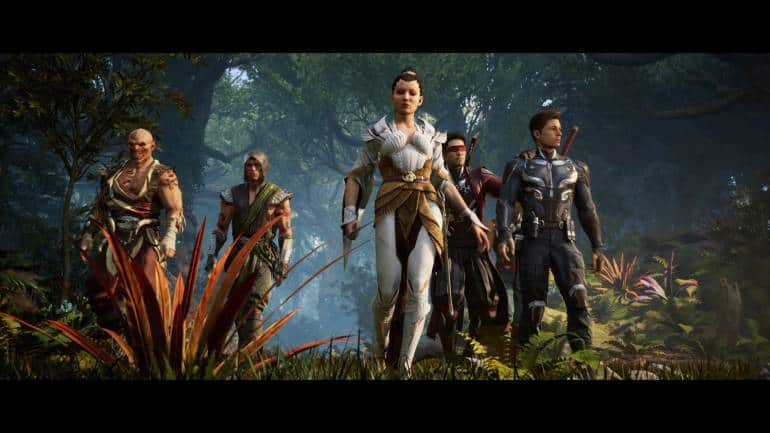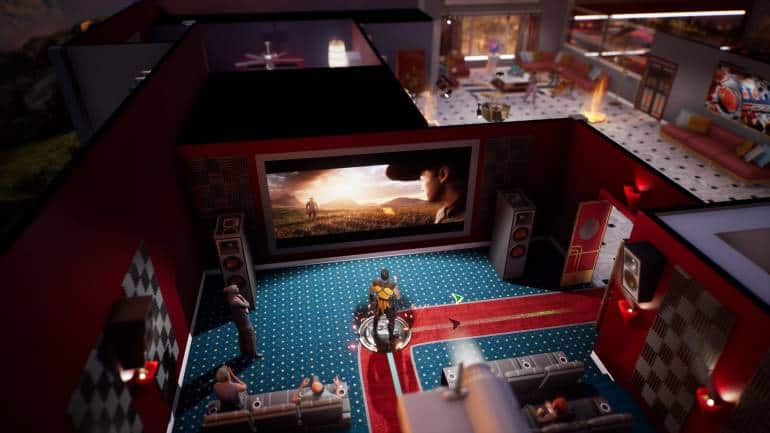



Is it possible to be a gamer without ever having played a Mortal Kombat game? It’s a rite of passage every gamer must go through. After all, how can one even claim to have played videogames if “Finish Him!!” isn’t in one’s vocabulary?
All hyperbole aside, this week saw the full launch of NetherRealm Studios’ Mortal Kombat 1 on PlayStation 5, Xbox Series X|S, PC and most hilariously, Nintendo Switch. It is the 12th main instalment of the series and the first in possibly forever to release in the same calendar year as a title from its rival Street Fighter stable (Street Fighter 6 released on 2 June this year). On top of all this, the Mortal Kombat series is attempting something of a reboot, which is why the followup to 2019’s Mortal Kombat 11 is this year’s Mortal Kombat 1. Clearly, there is already plenty at stake.

Having had the opportunity to try out the game’s open beta last month, I had some idea of what to expect with the full version of the game. The ensuing article for this website noted that the action was “very responsive to my input and extremely smooth in transitioning from one move to another”. In the time since the beta, the fluidity of combat has actually been further optimised, which is nice in a field full of clunky fighting games.
With a complement of 22 (or 23 if you include preorder bonus character Shang Tsung) playable characters at launch, there’s plenty of different fighting styles and philosophies to try. The number of iconic characters included as non-playable fighters or left out of the game entirely is certainly going to raise hackles, if it hasn’t already. However, if I had to have a tiny quibble at this stage, it would be that the game doesn’t offer the vast variety of fighting styles that something like Street Fighter does. For instance, E Honda, Dhalsim, Chun Li and Ryu could not be more different from one another.
Accompanying the crunchy and rather satisfying combat is the Kameo system of sidekicks who can be called upon to assist you with a couple of moves. This is likely to be a divisive little addition to the Mortal Kombat arsenal, because while on one hand, it adds a nice little layer of tactics to your fight, it can also imbalance competitive matches.

A constant throughout every generation of Mortal Kombat games has been the franchise’s uncanny embrace of kitsch and an unwavering propensity to be over-the-top. Whether in terms of the violence, the wanton gore or the characters and storylines themselves, the most appropriate way to describe the franchise’s approach would be Camp. As Susan Sontag describes it, the essence of Camp is “its love of the unnatural: Of artifice and exaggeration”.
Here, it is the mix of ultraviolence and super cheesy or corny (or korny, if you prefer) writing, characters and storylines that informs the brand. Look no further than the need to start every word that would normally begin with a C, with the letter K. But that’s just about enough theory for now; the 1995 film Mortal Kombat is an example of the finest execution of the formula. And Mortal Kombat 1 proudly continues that tradition.
It’s possible that the relatively no-nonsense approach (unless of course, we’re talking about the 1994 film) espoused by the Street Fighter series is why purists gravitate towards it. It’s equally possible that Mortal Kombat’s eagerness to embrace gimmicks like shoehorning every single horror film villain into Mortal Kombat X or stuffing its sequel with the likes of Spawn, Rambo, Robocop and Terminator T-800 is responsible for pushing them away. And let’s not forget the series’ history of fatalities, animalities and babalities, where other games would have settled for a simple finishing move.
In any case, the template is firmly in place, so let’s examine how this latest offering builds on it.

Up to a point, I’ve always found Mortal Kombat storylines to be fairly straightforward: Big tournament, best fighters across realms gather, tournament takes place, winner is crowned and credits roll. Of late however, it’s been getting increasingly difficult to keep track of who has what amulet or crown, who is the ruler of what domain, who has resurrected whom, who used to be a god but isn’t one anymore, what timeline we currently occupy and so on. The execution though has stayed faithful to its roots, by which I mean of course, cheesy as all hell.
You’ll see this in the origin story of Kung Lao and Raiden. Humble farmers, they compete with each other to see who can fill their respective barrels with produce quicker than they other. The loser has to buy the winner dinner. Unfortunately, they are attacked during their dinner setting in motion the story mode’s chain of events. Then there’s the ultra sincerity of most ‘good’ characters, visible in the near-parodic delivery of phrases like “It was an honour to fight you”, “Guide us? Yes. Shackle us? No”, “Your failure was inevitable” and “My battle is not with you” and the like.
Then there’s the Johnny Cage character. A film actor and martial arts expert, who cracks wise and drops quips like a discount store Marvel Cinematic Universe character. You’d cringe hard if you were actually paying attention to the dialogue and not twiddling your thumbs waiting for the next battle.
Before I give you the impression that Mortal Kombat is completely stuck in its ways, it should be noted that the franchise isn’t immune to cultural change. While I’m yet to see the words, “Finish Them!!” emblazoned across the screen, I was in equal parts heartened and amused by Liu Kang profoundly stating before the beginning of a battle, “May the best person win.” Personally, I would’ve gone with a different non-gender-specific term like ‘fighter’ or ‘warrior’ or ‘combatant’ or something, but Liu gonna Liu, I suppose.

And yet, no matter how many times I was forced to roll my eyes at the dialogue or shake my head at the gratuitous gore flying across my screen, I didn’t stop having a good time. It’s a lot like watching a Fast & Furious film. You know what you’re going to get, and yet you strap in for the ride and take it all in — no matter how much your brain tries to warn you otherwise.
While I’ve discussed the story mode at length, I’d be remiss not to mention the Invasion Mode. At the time of writing, those unfortunate enough to have picked up the game on the Switch can only access the intro of this mode. Very strange; sadly, such is the fate of third-party titles on that particular console. But, I digress.
The mode is a quasi-RPG take on a board game, where your selected character navigates across the board in order to launch attacks on different factions. The execution isn’t perfect, so the mode is a bit rough around the edges, but therein lies the charm. The developers’ willingness to take risks and not take their IP overly seriously is at the heart of having a good time with this franchise. Now would be a good time to recall 2004’s Mortal Kombat: Deception, which introduced the concept of Chess Kombat — a delightful yet divisive mini-game.
Invasion perfectly sums up the philosophy of the Mortal Kombat franchise, its willingness to take risks and be cheesy, all in a bid to entertain. There’s a reason I called the series a rite of passage. Now if only the good folks over at NetherRealm could do something about the filthy spectre of microtransactions that not only rears its ugly head again, but sticks around and keeps making awkward eye contact with you,... while making weird noises.

Discover the latest Business News, Sensex, and Nifty updates. Obtain Personal Finance insights, tax queries, and expert opinions on Moneycontrol or download the Moneycontrol App to stay updated!
Find the best of Al News in one place, specially curated for you every weekend.
Stay on top of the latest tech trends and biggest startup news.